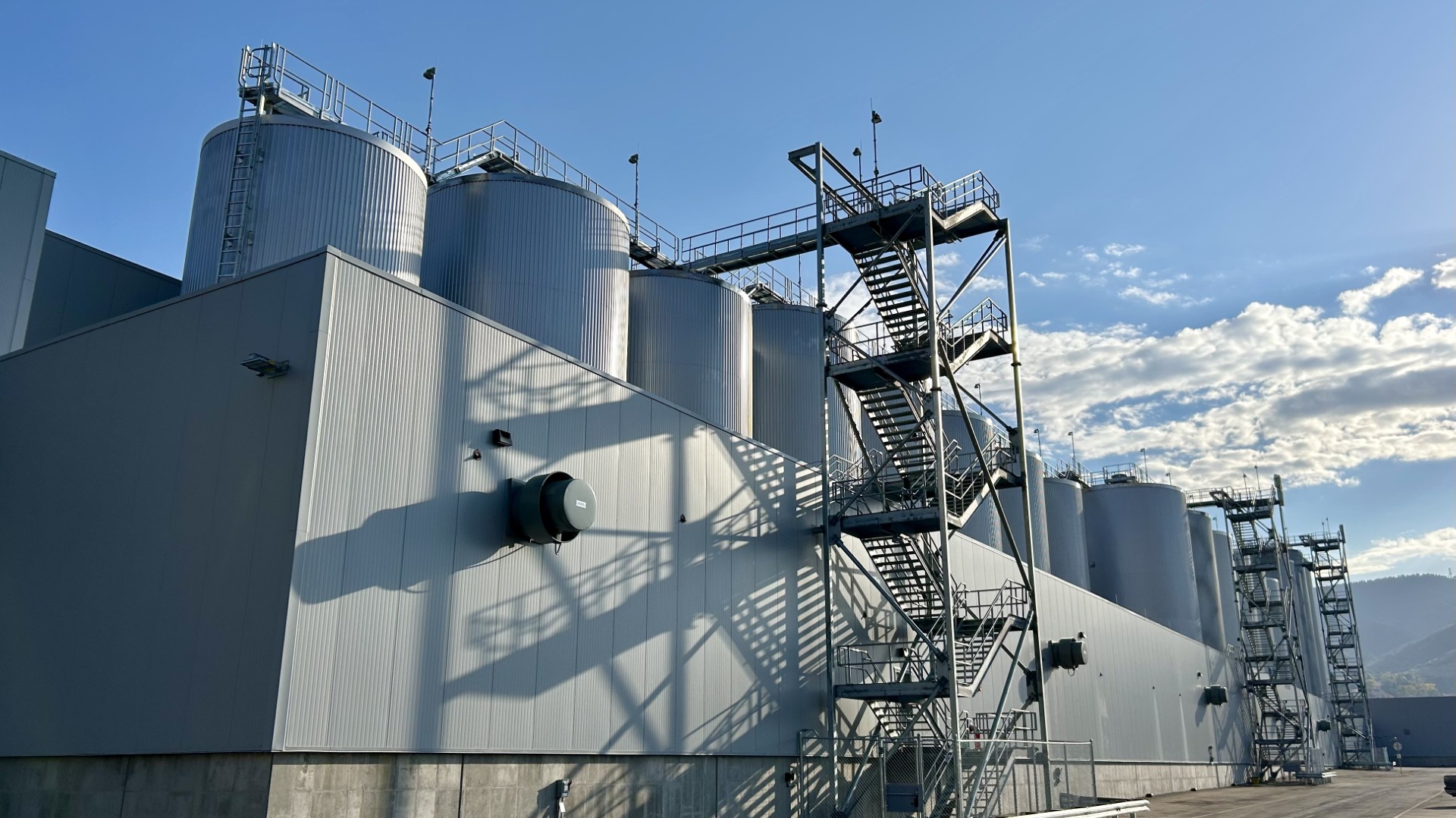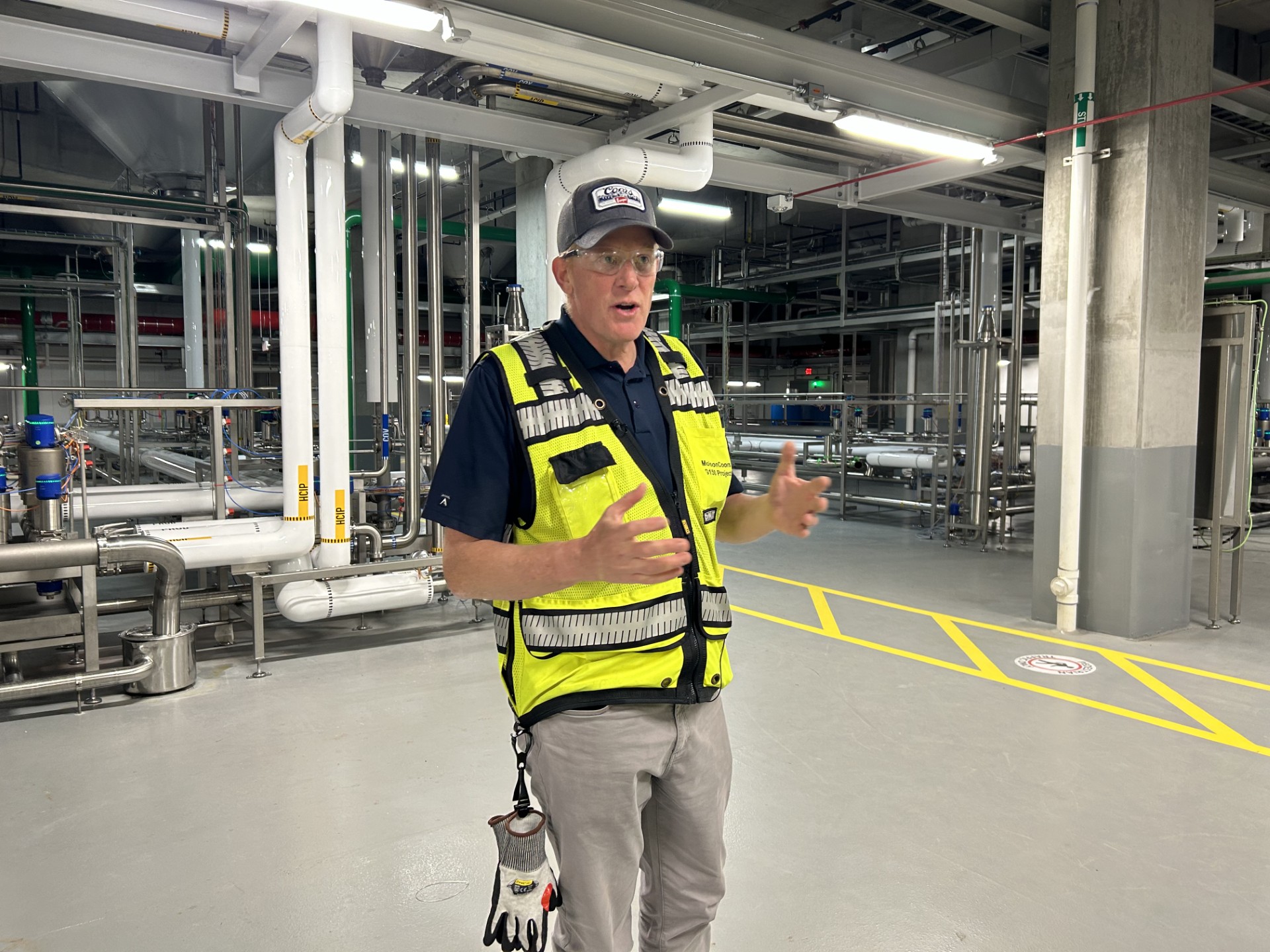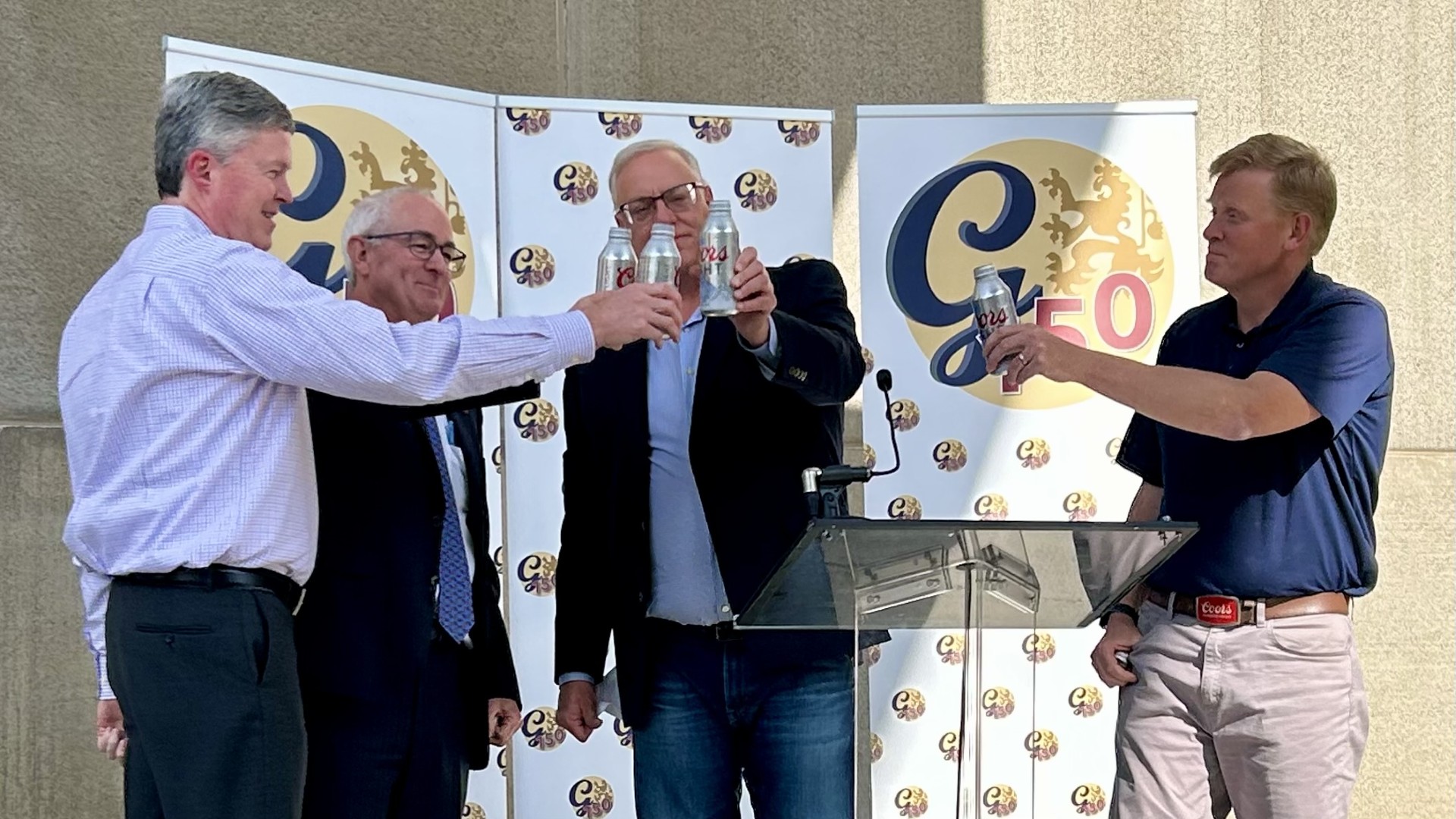
From Molson Coors & Nick Kindelsperger,
✓ The multi-million-dollar project modernized the largest brewery in the United States, replacing everything between the brew house and the packaging line
✓ Upgrades demonstrate Molson Coors’ commitment to invest behind its capabilities
✓ The new facilities are designed to drastically lower the brewery’s water, CO2 and energy usage
When Molson Coors CEO Gavin Hattersley announced the massive overhaul of the Golden, Colo., brewery back in 2020, he declared that it would “help ensure the Coors Brewery and our global business has a bright future for the next 150 years.”
Four years and one global pandemic later, Hattersley was on hand with several Molson Coors leaders to officially open the new facility, all of whom made clear that this is a huge project for the company.
“Our plans are big at Molson Coors, and they’re rooted in the sort of projects that make this a world-class beverage company,” Hattersley said. “It’s an investment we’re proud to make.”
Dubbed G150, after the town it has called home for over 150 years, the multi-year, multi hundred-million-dollar project helped transform the largest brewery in the United States into one that is also on the leading edge of brewery design.
By any measure, the G150 project has been a massive undertaking.
 Peter Coors leads a tour through the new brewery facilities.
Peter Coors leads a tour through the new brewery facilities.
Since breaking ground, over 2.4 million hours have gone into the project. It includes 200,000 square feet of space that stretches 1,000 feet end to end, nearly the length of three football fields. The brewery’s horizontal fermenters were replaced with more than 100 vertical tanks. Snaking through it all is 45 miles of piping and 150 miles of wire.
Leading the complex construction project was Peter J. Coors, the 5th generation family member of Coors’ founders.
His biggest focus? Ensuring that the company’s great-tasting beer stayed the same.
“We're passionate about the quality of our beer, for obvious reasons,” says Coors. “I’m proud to say our sensory team has not been able to tell any difference between the Coors Light made with the previous equipment and the new equipment, which is exactly what we wanted.” Tests on other brands the brewery will make, including Coors Banquet, Miller Lite and Keystone Light, have all been positive, too.
Coors is also pleased with what the new brewery means for Golden and the state of Colorado.
“This is a significant financial investment that really sets Golden up for the next 150 years,” says Coors. “We're investing for the future because we believe in Colorado.”
A more efficient, sustainable brewery
Not only is the Golden brewery one of the largest in the world, thanks to the new equipment, it’s now also one of the most efficient.
“The equipment that we replaced was 50, 60 and in some cases 70 years old,” says Coors. “Not only were we able to replace the previous equipment, but it’s been a boon from a sustainability perspective.”
Once again, the stats are impressive. Coors says that because the new equipment is more efficient and cuts down on beer loss, the brewery is expected cut its water usage by 80 million gallons annually. It should also require 25% less energy, while also capturing 30% more CO2 than before. These sustainability improvements are designed to significantly reduce the company’s carbon footprint, while helping it save money for brewing materials.
“If you look at how much malt we bring in, we should be able to make about 12% more beer than we did before,” he says. “CO2, energy and water usage are all going in the right direction in a significant way here in Golden.”
Ensuring the company’s long-term success
 Brian Erhardt, Gavin Hattersley, John Stonebraker and Peter J. Coors toast at the opening.
Brian Erhardt, Gavin Hattersley, John Stonebraker and Peter J. Coors toast at the opening.
At the unveiling event, Hattersley was also clear that the project is a key part of Molson Coors’ global strategy.
“The G150 project is an investment not only in the Coors Brewery and the Golden Valley, but Molson Coors’ capabilities in the 21st century and beyond,” he said.
It was also a process that took time.
According to Molson Coors’ chief supply chain officer Brian Erhardt, the construction might have taken four years, but the discussion around modernizing the Golden brewery was a ten-year journey.
“We were facing a real big recapitalization of the existing structure,” says Erhardt. “We were using valves that haven’t been produced in years. To give a car analogy, we realized we could either spend the money to get a new transmission and a muffler and still have an old car, or we can spend the money and get a new car.”
In the end, Molson Coors replaced everything between the brew house and the packaging line, providing the brewery with new fermentation and maturation tanks, along with new filtration and beer delivery systems. But some iconic structures from the previous era, particularly those that make the Golden brewery a landmark visitor attraction, are not going anywhere.
“As I told folks, those beautiful copper kettles that everybody sees on our public tour are going to stay exactly where they are,” says Coors.
A brewery for Golden’s future
Everyone at the opening event reiterated that along with being an important step for Molson Coors’ business, the updated brewery is a vote for how important Golden is to the company.
“This helps us ground Golden as a core supply source for us for the next 150 years,” says Erhardt. “We’ll continue make big investments in our Golden valley operations.”
This article contains forward-looking statements within the meaning of the U.S. federal securities laws – please click here for the full Molson Coors’ forward-looking statement disclaimer.

0 comments (click to read or post):
Post a Comment
Please leave a comment...I do moderate each comment so it may not appear immediately...and please be nice! You can also comment using Disqus (below) or even comment directly on Facebook (bottom).